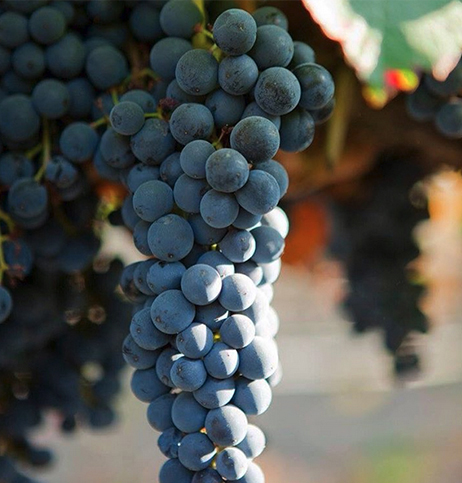As recently as the turn of the century the word “Malbec” would hardly have registered with British wine drinkers. The last decade however has seen a big change and today wines made from Malbec are among the most popular with UK consumers.
As we approach World Malbec Day (on the 17th April) I thought now would be a good time to explore the grape in a bit more detail.
A Bit of History
Malbec’s vinous roots lie in France, in particular the area around Cahors in South West France where it is known as Auxerrois or Cot. Here the wines are known mainly for their rusticity: inky black in colour with often quite fierce tannins – most definitely food wines! Historically plantings were also common in Bordeaux where Malbec (sometimes known as Pressac) provided colour and suppleness to the famous red blends of Bordeaux. Susceptibility to the cold however meant it was a rather tricky grape to grow successfully in these cooler climbs, so it fell out of favour.
Today Malbec pops up almost everywhere: from Italy and South Africa to America, Australia, New Zealand and Chile. But one country above all stands out as Malbec’s modern home and that is Argentina. The grape was introduced there during the mid-1850s and it is safe to say winemakers have certainly taken it to their hearts. Today Malbec is Argentina’s flagship variety producing a staggering 75% of all the Malbec grapes grown worldwide with an eyewatering 129 million litres exported in 2020 (source Wines of Argentina).

In Argentina, the rather unique environment (high altitude, intense sunlight and semi-arid conditions) has proven to be an ideal bedfellow for the grape. Malbec needs to fully ripen to avoid astringent tannins and in Argentina the altitude moderates the temperature and the dry sunny conditions allow for long hang-times on the vines which means the grapes achieve full ripeness while retaining acidity. Win-Win!
Malbec - What does it taste like?
It very much depends on where it is from:
In Cahors – wines tend towards a spiced blackcurrant, dried fruit profile, with tobacco leaf and leathery, savoury notes. These wines tend to be quite lean with a medium body, moderate alcohols and usually very robust tannins. Things are beginning to change however with winemakers looking to tame tannins and make their wines more approachable earlier. Top Tip: Wines labelled as ‘Cahors’ must contain 70% Malbec (the remainder can be Tannat and/or Merlot).
In Argentina, there a number of distinct styles of Malbec depending on where the wine is made and alcohols are generally higher than in Cahors. In warmer lower altitude sites, wines have a dark fruit profile – plummy, blackcurrant, dark cherry often with a slightly jammy edge with dried fruit notes. Fuller in body with ultra-ripe velvety tannins these wines are easy drinking and very approachable, although can lack a bit of acidity in cheaper, less well made wines.
Fruit from higher altitude vineyards produce wines with a fruit profile that runs the gamut from raspberry to blackcurrant, mulberry and blueberry with lifted violet florals. Acidity is higher and the wines appear more elegant and fresh with more structure to, and integration of, the fine tannins.
While Argentina often makes wines in an earlier drinking style, there are increasing numbers of more premium oak-aged Malbec being made – producing wines which marry appealing chocolate, vanilla and smoky notes with the generous fruit profile.
Why is Malbec so popular?
It ticks a lot of boxes:
Easy drinking – Full bodied wines can be on the tannic side, and while some of the wines of Cahors still have this tendency, the more modern style and the approach taken in the New World tends towards ripe tannins and lovely sweet fruit.
Affordable – there are a lot of perfectly serviceable Malbec’s available for under a tenner particularly from South America, but for those of you happy to spend a little more, Argentina offers some truly fabulous wines in the £10-£20 range.
Characterful – you don’t have to stick your nose in and hunt for any aromas, Malbec has it by the bucket load. Who doesn’t love an expressive wine?
Versatile – It is a good match for food (particularly red meats like steak, sausages and burgers) but is equally enjoyable without food.
If you’ve never tasted Malbec, now is a good time to try. I’ll certainly be opening a bottle on Saturday and celebrating the joy of Malbec, I hope you will too!
**For those of you keen to try a brilliant multi-award winning Malbec (for under £11) keep your eyes peeled for details on my next Wine Demystifier Wine Club mixed case which is showcasing ‘Argentinian Wines’ available from May 2021. This case will include an educational information pack on Argentina: key grapes, wine styles, regions and producers to look for alongside the usual tasting notes. **
